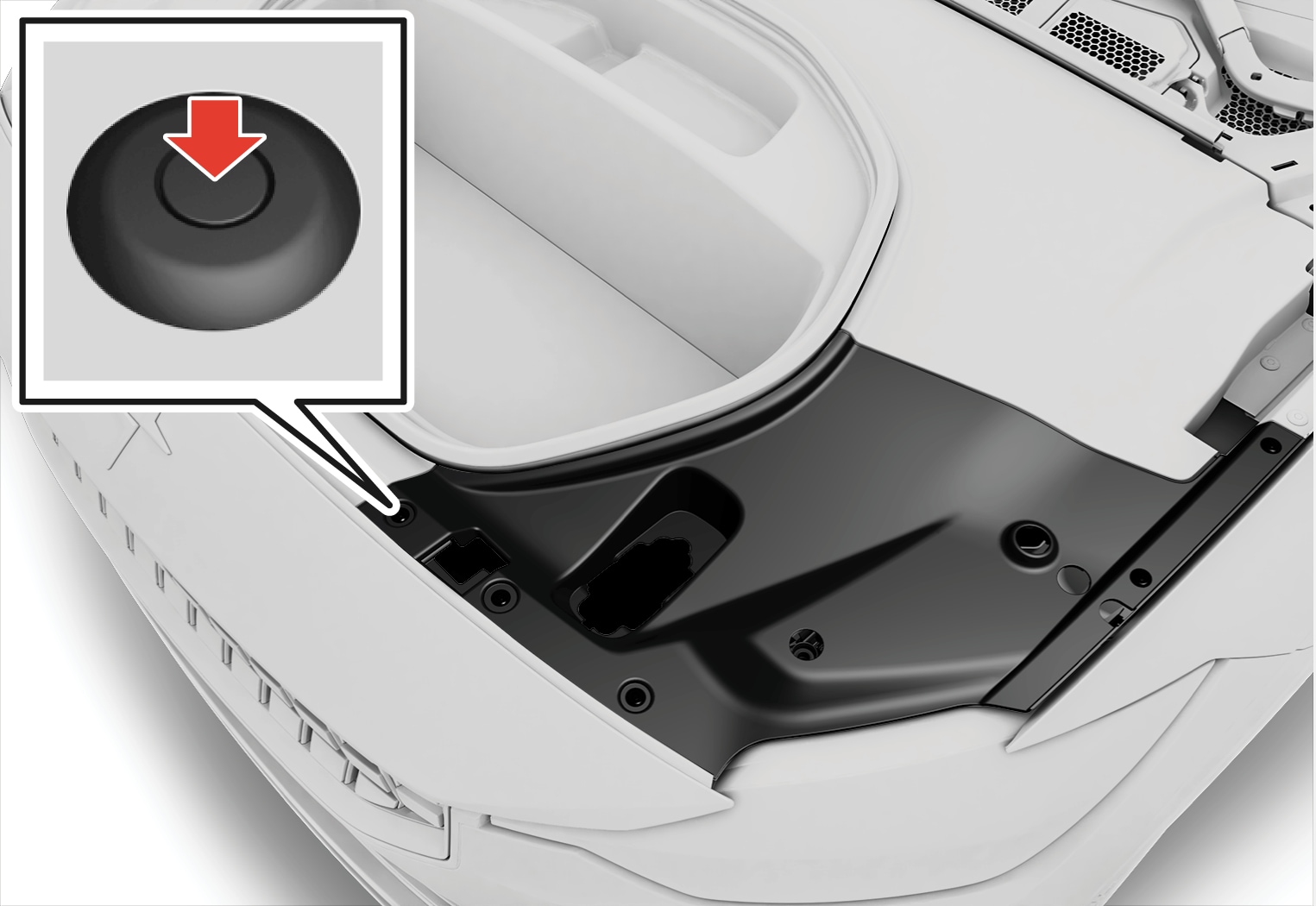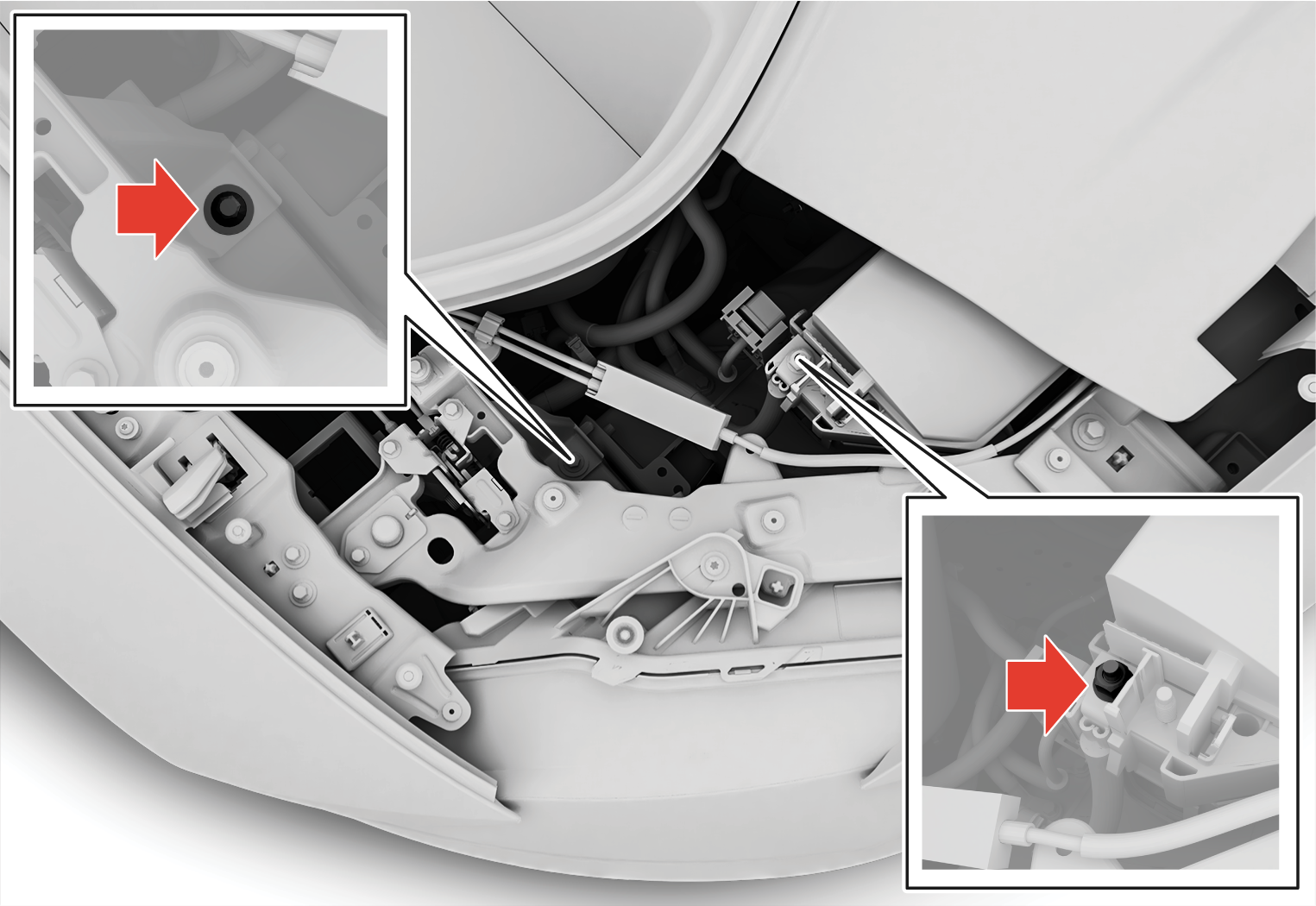Using jump starting with another battery
Under normal conditions, the 12V battery is charged at the same time as the car is charged, as well as via current transmission from the high voltage battery when the car is not connected for charging.
If the 12V battery is discharged for any reason, jump-starting can still be used. This may be caused by the car not being used for a long time, a temporary fault, or a blown fuse in the car's charging circuit, for example. A discharged 12V battery needs to be charged sufficiently in order to be able to start the car's electrical system. After start-up, it is possible to start charging the car using the charging cable, which will be necessary if the high voltage battery is also discharged. If the car is out of reach for charging in such a situation, it may need recovery.
Using jump-starting requires jump leads, which are connected to the charging points for the 12V battery.
Access to the charging points
The protective panel that allows access to the charging points is located front left under the bonnet, and is held in place with fasteners. To remove these fasteners, use a screwdriver, pen or similar to press in the locking pin in the middle of the fastener. When the pin is pressed in far enough, the fastener can be pulled out. Avoid pushing the pin all the way through the fastener, as this could cause it to dislodge and fall down between components. When reinstalling the panel, pull the locking pin out completely before reinserting the fastener. When the fastener is inserted in the attachment hole, push the locking pin into place again to secure the panel.

Connecting the jump leads

Important
The car's charging points are only intended for jump-starting the car itself. The charging points are not intended for jump-starting another car. Using the charging points to jump start another car may cause a fuse to blow, which means the charging points will stop working.
If the message 12 V battery fuse failure Service required is shown in the driver display then a fuse has blown and needs to be changed.
When jump-starting the car using another battery, the following steps are recommended to avoid short circuits or other damage:
Important
Important
Note
Remove the jump leads in reverse order - first the black and then the red.
Make sure that none of the black jump lead's clamps comes into contact with the car's positive charging point, the donor battery's positive terminal or the clamp connected to the red jump lead.
Note
Warning
- The battery can generate oxyhydrogen gas, which is highly explosive. A spark can be formed if a jump lead is connected incorrectly, and this can be enough for the battery to explode.
- Do not connect the jump leads to any fuel system component or any moving part. Be careful of hot engine parts.
- The battery contains sulphuric acid, which can cause serious burns.
- If sulphuric acid comes into contact with eyes, skin or clothing, flush with large quantities of water. If acid splashes into the eyes - seek medical attention immediately.
- Never smoke near the battery.